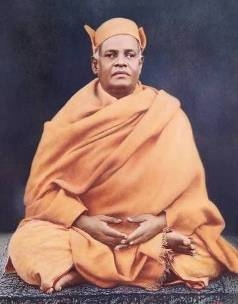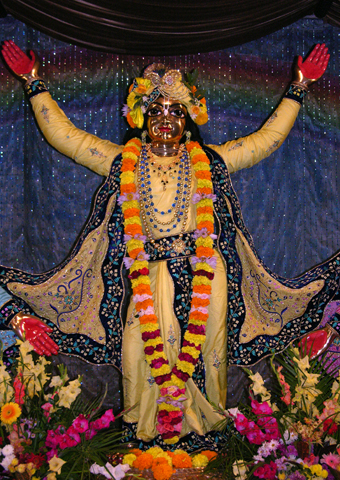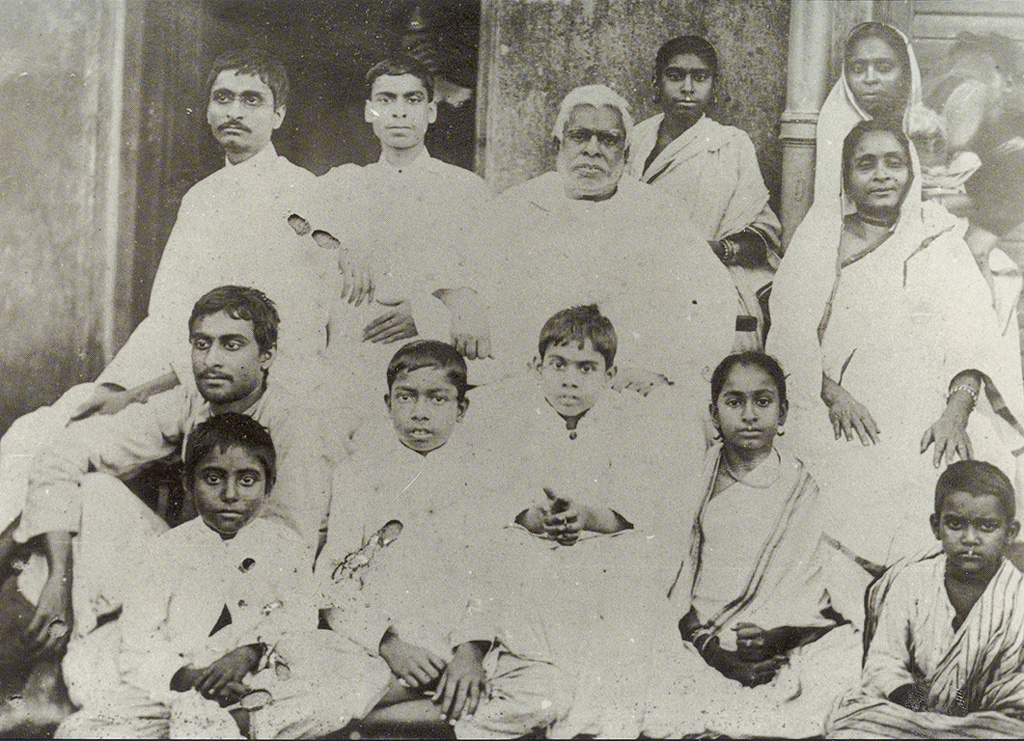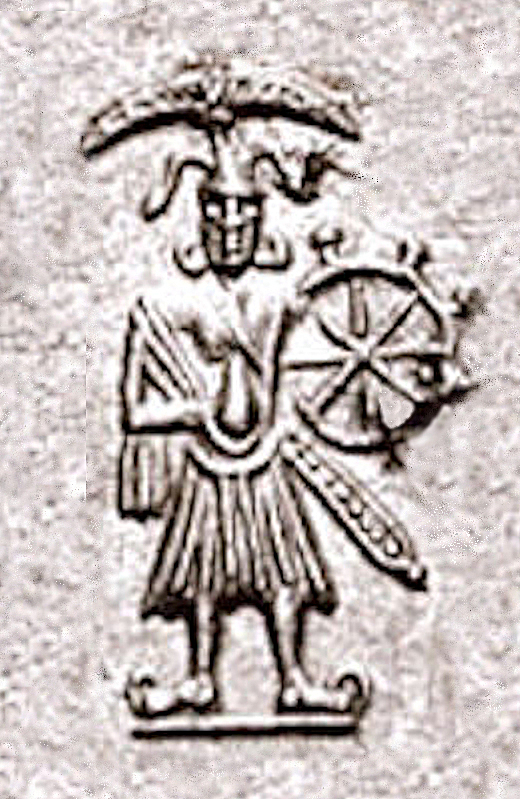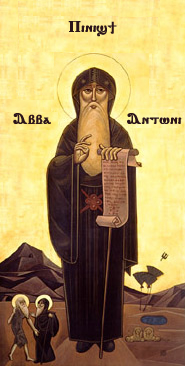|
Swami
Swami (; ; sometimes abbreviated sw.) in Hinduism is an honorific title given to an Asceticism#Hinduism, ascetic who has chosen the Sannyasa, path of renunciation (''sanyāsa''), or has been initiated into a religious monastic order of Vaishnavas. It is used either before or after the subject's name (usually an adopted religious name). An alternative form, swamini (), is sometimes used by female renunciates. The meaning of the Sanskrit root of the word ''swami'' is "[he who is] one with his Philosophy of self#Self in Eastern traditions, self" ( stands for "self"), and can roughly be translated as "he/she who knows and is master of himself/herself". The term is often attributed to someone who has achieved mastery of a particular Yoga, yogic system or demonstrated profound devotion (''bhakti'') to one or more Hindu gods. The ''Oxford English Dictionary'' gives the etymology as: As a direct form of address, or as a stand-in for a swami's name, it is often rendered ''Swamiji'' (als ... [...More Info...] [...Related Items...] OR: [Wikipedia] [Google] [Baidu] |
Goswami
Goswami is an Indian surname and honorific title used by Brahmins and Hindu Asceticism, ascetics. It is also pronounced as, Gosains, Gosine, Gossain, Gosain, Gossai, and Gosavi. Notables Notable people with the surname or title Goswami include: *Six Goswamis of Vrindavana *Abhishek Goswami, Indian cricketer *Abir Goswami, Indian actor *Alpana Goswami, Indian actress *Anay Goswamy, cinematographer * Amar Goswami (1945–2012), Indian journalist and Hindi fiction writer * Anil Goswami, Union Home Secretary of India *Anjali Goswami, Honorary Professor of paleobiology at University College London *Arup Kumar Goswami, Indian judge, chief justice of Andhra Pradesh High Court * Arnab Goswami, Indian television journalist *Ashokpuri Goswami, Gujarati poet and writer *B. N. Goswamy, Indian art critic, art historian * Bhairavi Goswami, model * Bindiya Goswami, actress * Brindaban Goswami, Indian politician *Bhakti Prajnana Kesava Goswami, founder of the religious organization Sri Gaudiya ... [...More Info...] [...Related Items...] OR: [Wikipedia] [Google] [Baidu] |
Gaudiya Vaishnavism
Gaudiya Vaishnavism (), also known as Chaitanya Vaishnavism, is a Vaishnavism, Vaishnava Hindu denominations, Hindu religious movement inspired by Chaitanya Mahaprabhu (1486–1534) in India. "Gaudiya" refers to the Gaura or Gauḍa region of Bengal (present-day Malda district of West Bengal and Rajshahi district of Bangladesh), with Vaishnavism meaning "the worship of Vishnu". Specifically, it is part of Krishnaism–Krishna-centric Vaishnavite traditions. Its theological basis is primarily that of the ''Bhagavad Gita'' and ''Bhagavata Purana'' (known within the tradition as the ''Srimad Bhagavatam''), as interpreted by early followers of Chaitanya, such as Sanatana Goswami, Rupa Goswami, Jiva Goswami, Gopala Bhatta Goswami and others. The focus of Gaudiya Vaishnavism is the devotional worship (known as bhakti yoga) of Radha and Krishna, and their many divine incarnations as the supreme forms of God, ''Svayam Bhagavan''. Most popularly, this worship takes the form of singin ... [...More Info...] [...Related Items...] OR: [Wikipedia] [Google] [Baidu] |
Assamese Language
Assamese () or Asamiya ( ) is an Indo-Aryan language spoken mainly in the north-eastern Indian state of Assam, where it is an official language. It has long served as a ''lingua franca'' in parts of Northeast India."Axomiya is the major language spoken in Assam, and serves almost as a lingua franca among the different speech communities in the whole area." It has over 15 million native speakers and 8.3 million second language, second language speakers according to ''Ethnologue''. Nefamese, an Assamese-based pidgin in Arunachal Pradesh, was used as a lingua franca till it was replaced by Hindi language, Hindi; and Nagamese Creole, Nagamese, an Assamese-based Creole language, continues to be widely used in Nagaland. The Kamtapuri language of Rangpur division of Bangladesh and the Cooch Behar district, Cooch Behar and Jalpaiguri district, Jalpaiguri districts of India is linguistically closer to Assamese, though the speakers identify with the Bengali culture and the literary lan ... [...More Info...] [...Related Items...] OR: [Wikipedia] [Google] [Baidu] |
Bhaktisiddhanta Sarasvati
Bhaktisiddhanta Sarasvati (; ; ; 6 February 1874 – 1 January 1937), born Bimala Prasad Datt (, ), was an Indian Gaudīya Vaisnava Hindu guru (spiritual master), ācārya (philosophy instructor), and revivalist in early twentieth-century India. To his followers, he was known as ''Srila Prabhupāda'' (an honorific also later extended to his disciple A. C. Bhaktivedanta Swami Prabhupada). Bimala Prasad was born in 1874 in Puri (then Bengal Presidency, now Orissa) in a Bengali Hindu Kayastha family as a son of Kedarnath Datta Bhaktivinoda Thakur, a recognised Bengali Gaudiya Vaishnava philosopher and teacher. Bimala Prasad received both Western and traditional Indian education and gradually established himself as a leading intellectual among the '' bhadralok ''(Western-educated and often Hindu Bengali residents of colonial Calcutta), earning the title Siddhānta Sarasvatī ("the pinnacle of wisdom"). In 1900, Bimala Prasad took initiation into Gaudiya Vaishnavism from the Va ... [...More Info...] [...Related Items...] OR: [Wikipedia] [Google] [Baidu] |
Vaishnavas
Vaishnavism () ), also called Vishnuism, is one of the major Hindu denominations, Hindu traditions, that considers Vishnu as the sole Para Brahman, supreme being leading all other Hindu deities, that is, ''Mahavishnu''. It is one of the major Hindu denominations along with Shaivism, Shaktism, and Smartism. Its followers are called Vaishnavites or ''Vaishnava''s (), and it includes sub-sects like Krishnaism and Ramanandi Sampradaya, Ramaism, which consider Krishna and Rama as the supreme beings respectively. According to a 2020 estimate by The World Religion Database (WRD), hosted at Boston University’s Institute on Culture, Religion and World Affairs (CURA), Vaishnavism is the largest Hindu sect, constituting about 399 million Hindus. The ancient emergence of Vaishnavism is unclear, and broadly hypothesized as a History of Hinduism, fusion of various regional non-Vedic religions with worship of Vishnu. It is considered a merger of several popular non-Vedic theistic traditio ... [...More Info...] [...Related Items...] OR: [Wikipedia] [Google] [Baidu] |
Bairagi (caste)
Bairagi Brahmin or Vaishnav Bairagi or Vaishnav Brahmin is a Hindu caste. They are Hindu priests. They are sedentary rasik (temple dwelling or temple priest) Brahmin members of the Vaishnava sampradayas, especially the Ramanandi Sampradaya. According to K.S. Singh, the community uses different surnames/titles in different states and union territories of India; these are: Swami, Bairagi, Mahanta, Maharaj, Vaishnav, Bawa, Pandit, Purohit, Goswami, Sharma, Das, Brahmachari. They are Vaishnav, and wear the sacred thread. A majority of Bairagi Brahmin is found in Uttar Pradesh, Bihar, Jharkhand, West Bengal, Assam, and Odisha. Vaishnavas are considered as part of the 'upper castes' of India. Vaishnav Sect and Vaishnav Brahmin Caste Vaishnav Sect Members of vaishnava sampradayas are called Bairagi or Vairagi. And these members are divided into three categories – renunciant (Virakt), warrior (Naga) and temple-dwelling (temple priest) ascetics. The most of renunciant and wa ... [...More Info...] [...Related Items...] OR: [Wikipedia] [Google] [Baidu] |
Hinduism
Hinduism () is an Hypernymy and hyponymy, umbrella term for a range of Indian religions, Indian List of religions and spiritual traditions#Indian religions, religious and spiritual traditions (Sampradaya, ''sampradaya''s) that are unified by adherence to the concept of ''dharma'', a Ṛta, cosmic order maintained by its followers through rituals and righteous living, as expounded in the Vedas. The word ''Hindu'' is an exonym, and while Hinduism has been called the oldest religion in the world, it has also been described by the modern term ''Sanātana Dharma'' () emphasizing its eternal nature. ''Vaidika Dharma'' () and ''Arya dharma'' are historical endonyms for Hinduism. Hinduism entails diverse systems of thought, marked by a range of shared Glossary of Hinduism terms, concepts that discuss God in Hinduism, theology, Hindu mythology, mythology, among other topics in Hindu texts, textual sources. Hindu texts have been classified into Śruti () and Smṛti (). The major Hin ... [...More Info...] [...Related Items...] OR: [Wikipedia] [Google] [Baidu] |
Rajasthan
Rajasthan (; Literal translation, lit. 'Land of Kings') is a States and union territories of India, state in northwestern India. It covers or 10.4 per cent of India's total geographical area. It is the List of states and union territories of India by area, largest Indian state by area and the List of states and union territories of India by population, seventh largest by population. It is on India's northwestern side, where it comprises most of the wide and inhospitable Thar Desert (also known as the Great Indian Desert) and shares a border with the Pakistani provinces of Punjab, Pakistan, Punjab to the northwest and Sindh to the west, along the Sutlej-Indus River valley. It is bordered by five other Indian states: Punjab, India, Punjab to the north; Haryana and Uttar Pradesh to the northeast; Madhya Pradesh to the southeast; and Gujarat to the southwest. Its geographical location is 23°3' to 30°12' North latitude and 69°30' to 78°17' East longitude, with the Tropic of Can ... [...More Info...] [...Related Items...] OR: [Wikipedia] [Google] [Baidu] |
Sannyasa
''Sannyasa'' (), sometimes spelled ''sanyasa'', is the fourth stage within the Hinduism, Hindu system of four life stages known as ''ashrama (stage), ashramas'', the first three being ''brahmacharya'' (celibate student), ''Gṛhastha, grihastha'' (householder) and ''Vānaprastha, vanaprastha'' (forest dweller, retired). ''Sannyasa'' is traditionally conceptualized for men or women in the last years of their life, but young ''brahmachari''s have the choice to skip the householder and retirement stages, renounce worldly and materialistic pursuits and dedicate their lives to spiritual pursuits. ''Sannyasa'', a form of asceticism marked by renunciation of material desires and prejudices, is characterized by a state of disinterest in and detachment from material life, with the purpose of spending one's life in peaceful, spiritual pursuits. An individual in Sanyasa is known as a ''sannyasi'' (male) or ''sannyasini'' (female) in Hinduism. Sannyasa shares similarities with the Sadhu a ... [...More Info...] [...Related Items...] OR: [Wikipedia] [Google] [Baidu] |
Asceticism
Asceticism is a lifestyle characterized by abstinence from worldly pleasures through self-discipline, self-imposed poverty, and simple living, often for the purpose of pursuing Spirituality, spiritual goals. Ascetics may withdraw from the world for their practices or continue to be part of their society, but typically adopt a Frugality, frugal lifestyle, characterised by the renunciation of Economic materialism, material possessions and physical pleasures, and also spend time fasting while concentrating on the practice of religion, prayer, or meditation. Some individuals have also attempted an ascetic lifestyle to free themselves from addictions to things such as Alcoholic beverage, alcohol, tobacco, Drug, drugs, entertainment, Sexual intercourse, sex, food, etc. Asceticism has been historically observed in many religious and philosophical traditions, most notably among Ancient Greek philosophy, Ancient Greek philosophical schools (Epicureanism, Gymnosophists, Gymnosophism, Stoic ... [...More Info...] [...Related Items...] OR: [Wikipedia] [Google] [Baidu] |
Sannyasa
''Sannyasa'' (), sometimes spelled ''sanyasa'', is the fourth stage within the Hinduism, Hindu system of four life stages known as ''ashrama (stage), ashramas'', the first three being ''brahmacharya'' (celibate student), ''Gṛhastha, grihastha'' (householder) and ''Vānaprastha, vanaprastha'' (forest dweller, retired). ''Sannyasa'' is traditionally conceptualized for men or women in the last years of their life, but young ''brahmachari''s have the choice to skip the householder and retirement stages, renounce worldly and materialistic pursuits and dedicate their lives to spiritual pursuits. ''Sannyasa'', a form of asceticism marked by renunciation of material desires and prejudices, is characterized by a state of disinterest in and detachment from material life, with the purpose of spending one's life in peaceful, spiritual pursuits. An individual in Sanyasa is known as a ''sannyasi'' (male) or ''sannyasini'' (female) in Hinduism. Sannyasa shares similarities with the Sadhu a ... [...More Info...] [...Related Items...] OR: [Wikipedia] [Google] [Baidu] |
Odiya Language
Odia (;"Odia" ''Lexico''. , ISO 15919, ISO: , ; formerly rendered as Oriya) is a classical languages of India, classical Indo-Aryan languages, Indo-Aryan language spoken in the Indian state of Odisha. It is the Languages with official status in India, official language in Odisha (formerly rendered as Orissa), where native speakers make up 82% of the population, and it is also spoken in parts of West Bengal, Jharkhand, Andhra Pradesh and Chhattisgarh. Odia is one of the Languages with official status in India, official languages of India; it is the official language of Odisha and the second official language of Jharkhand. The Odia language has various dialects varieties, including the Baleswari Odia (Northern dialect), Kataki, Dhenkanalia, Anugulia(central dialect), Ganjami O ... [...More Info...] [...Related Items...] OR: [Wikipedia] [Google] [Baidu] |
